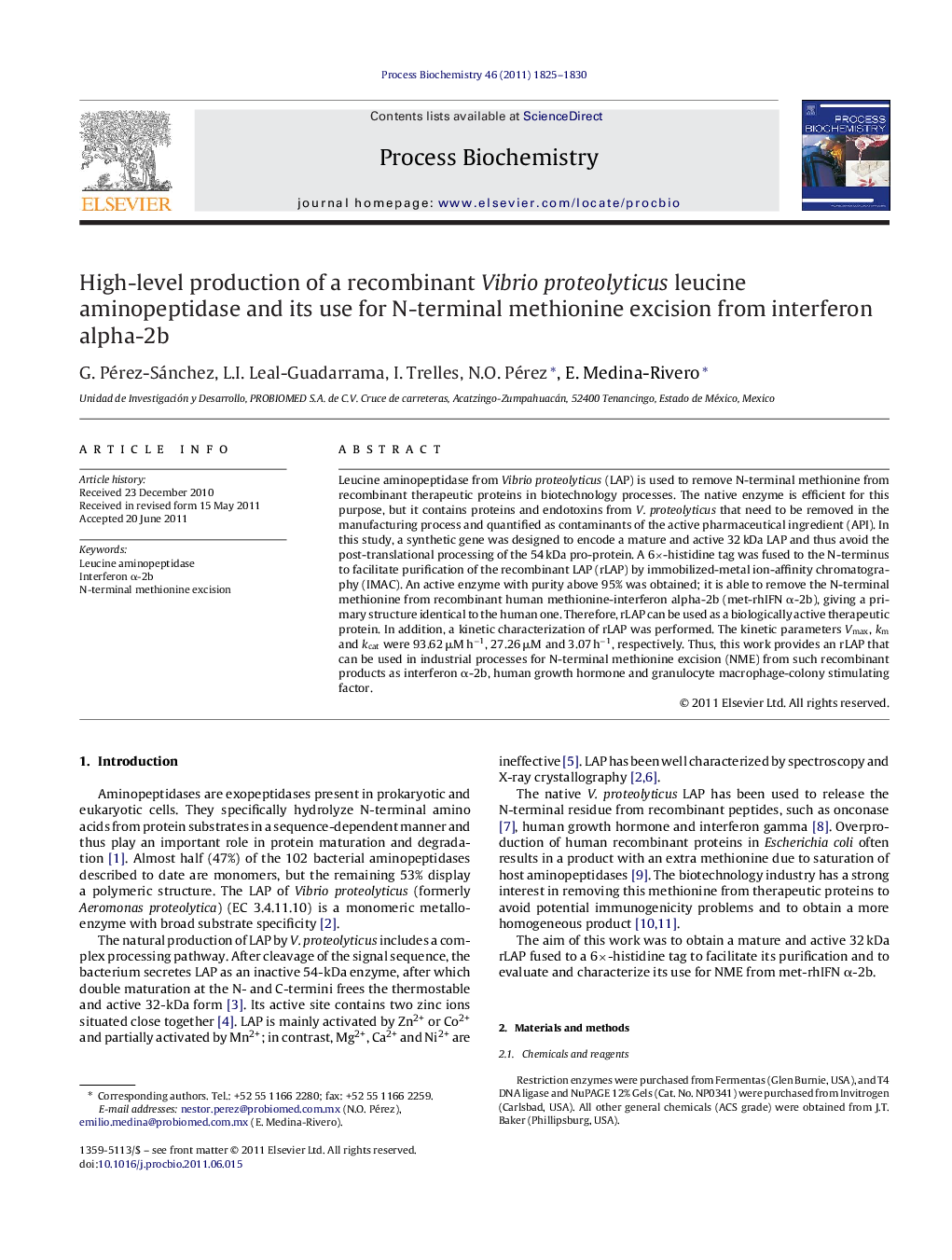| Article ID | Journal | Published Year | Pages | File Type |
|---|---|---|---|---|
| 10235486 | Process Biochemistry | 2011 | 6 Pages |
Abstract
Leucine aminopeptidase from Vibrio proteolyticus (LAP) is used to remove N-terminal methionine from recombinant therapeutic proteins in biotechnology processes. The native enzyme is efficient for this purpose, but it contains proteins and endotoxins from V. proteolyticus that need to be removed in the manufacturing process and quantified as contaminants of the active pharmaceutical ingredient (API). In this study, a synthetic gene was designed to encode a mature and active 32 kDa LAP and thus avoid the post-translational processing of the 54 kDa pro-protein. A 6Ã-histidine tag was fused to the N-terminus to facilitate purification of the recombinant LAP (rLAP) by immobilized-metal ion-affinity chromatography (IMAC). An active enzyme with purity above 95% was obtained; it is able to remove the N-terminal methionine from recombinant human methionine-interferon alpha-2b (met-rhIFN α-2b), giving a primary structure identical to the human one. Therefore, rLAP can be used as a biologically active therapeutic protein. In addition, a kinetic characterization of rLAP was performed. The kinetic parameters Vmax, km and kcat were 93.62 μM hâ1, 27.26 μM and 3.07 hâ1, respectively. Thus, this work provides an rLAP that can be used in industrial processes for N-terminal methionine excision (NME) from such recombinant products as interferon α-2b, human growth hormone and granulocyte macrophage-colony stimulating factor.
Related Topics
Physical Sciences and Engineering
Chemical Engineering
Bioengineering
Authors
G. Pérez-Sánchez, L.I. Leal-Guadarrama, I. Trelles, N.O. Pérez, E. Medina-Rivero,
